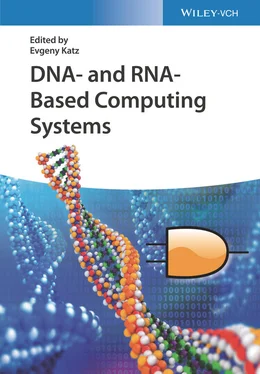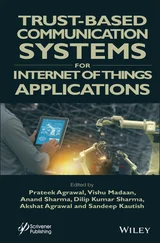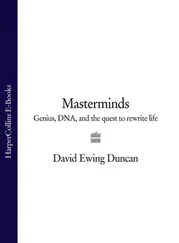1 1 Malvino, A.P. and Brown, J.A. (1993). Digital Computer Electronics, 3e. Lake Forest: Glencoe.
2 2 de Silva, A.P. and Uchiyama, S. (2007). Nat. Nanotechnol. 2: 399–410.
3 3 de Silva, A.P., Leydet, Y., Lincheneau, C., and McClenaghan, N.D. (2006). J. Phys. Condens. Matter 18: S1847–S1872.
4 4 Ball, P. (2000). Nature 406: 118–120.
5 5 Katz, E. (2017). Anal. Bioanal. Chem. 409: 81–94.
6 6 Katz, E. (2015). Curr. Opin. Biotechnol. 34: 202–208.
7 7 Schneider, H.J. (2017). ChemPhysChem 18: 2306–2313.
8 8 Benenson, Y. (2016). Chimia (Aarau) 70: 392–394.
9 9 Erbas‐Cakmak, S., Kolemen, S., Sedgwick, A.C. et al. (2018). Chem. Soc. Rev. 47: 2228–2248.
10 10 Adleman, L.M. (1994). Science 266: 1021–1024.
11 11 Stojanovic, M.N., Stefanovic, D., and Rudchenko, S. (2014). Acc. Chem. Res. 47: 1845–1852.
12 12 Fu, T., Lyu, Y., Liu, H. et al. (2018). Trends Biochem. Sci. 43: 547–560.
13 13 Ariga, K., Nishikawa, M., Mori, T. et al. (2019). Sci. Technol. Adv. Mater. 20: 51–95.
14 14 Stojanovic, M.N., Mitchell, T.E., and Stefanovic, D. (2002). J. Am. Chem. Soc. 124: 3555–3561.
15 15 Saghatelian, A., Völcker, N.H., Guckian, K.M. et al. (2003). J. Am. Chem. Soc. 125: 346–347.
16 16 Okamoto, A., Tanaka, K., and Saito, I. (2004). J. Am. Chem. Soc. 126: 9458–9463.
17 17 Yoshida, W. and Yokobayashi, Y. (2007). Chem. Commun. 14: 195–197.
18 18 Penchovsky, R. and Breaker, R.R. (2005). Nat. Biotechnol. 23: 1424–1433.
19 19 He, H.Z., Chan, D.S., Leung, C.H., and Ma, D.L. (2013). Nucleic Acids Res. 41: 4345–4359.
20 20 Kahan‐Hanum, M., Douek, Y., Adar, R., and Shapiro, E. (2013). Sci. Rep. 3: 1535.
21 21 Li, T., Lohmann, F., and Famulok, M. (2014). Nat. Commun. 5: 4940.
22 22 Guo, Y., Zhou, L., Xu, L. et al. (2014). Sci. Rep. 4: 7315.
23 23 Fan, D., Wang, K., Zhu, J. et al. (2015). Chem. Sci. 6: 1973–1978.
24 24 Green, A.A., Kim, J., Ma, D. et al. (2017). Nature 548: 117–121.
25 25 Gao, J., Liu, Y., Lin, X. et al. (2017). Sci. Rep. 7: 14014.
26 26 He, K., Li, Y., Xiang, B. et al. (2015). Chem. Sci. 6: 3556–3564.
27 27 Gerasimova, Y.V. and Kolpashchikov, D.M. (2016). Angew. Chem. Int. Ed. 55: 10244–10247.
28 28 Harding, B., Pollak, N.M., Stefanovic, D., and Macdonald, J. (2019). Nano Lett. https://doi.org/10.1021/acs.nanolett.9b02326.
29 29 Tam, D.Y., Dai, Z., Chan, M.S. et al. (2016). Angew. Chem. Int. Ed. 55: 164–168.
30 30 O'Steen, M.R., Cornett, E.M., and Kolpashchikov, D.M. (2015). Chem. Commun. (Camb) 51: 1429–1431.
31 31 Mailloux, S., Gerasimova, Y.V., Guz, N. et al. (2015). Angew. Chem. Int. Ed. 54: 6562–6566.
32 32 Fedotova, T.A. and Kolpashchikov, D.M. (2017). Chem. Commun. (Camb) 53: 12622–12625.
33 33 Liu, H., Yu, X., Chen, Y. et al. (2017). Nat. Commun. 8: 2006.
34 34 Zhou, W., Ding, J., and Liu, J. (2017). Theranostics 7: 1010–1025.
35 35 Stojanović, M.N. and Stefanović, D. (2003). J. Am. Chem. Soc. 125: 6673–6676.
36 36 Lederman, H., Macdonald, J., Stefanovic, D., and Stojanovic, M.N. (2006). Biochemistry 45: 1194–1199.
37 37 Gerasimova, Y.V. and Kolpashchikov, D.M. (2015). Chem. Commun. (Camb) 51: 870–872.
38 38 Macdonald, J., Li, Y., Sutovic, M. et al. (2006). Nano Lett. 6: 2598–2603.
39 39 Stojanovic, M.N. and Stefanovic, D. (2003). Nat. Biotechnol. 21: 1069–1074.
40 40 Stojanovic, M.N., Semova, S., Kolpashchikov, D. et al. (2005). J. Am. Chem. Soc. 127: 6914–6915.
41 41 Yashin, R., Rudchenko, S., and Stojanovic, M.N. (2007). J. Am. Chem. Soc. 129: 15581–15584.
42 42 Han, C.M., Katilius, E., and Santiago, J.G. (2014). Lab Chip 14: 2958–2967.
43 43 Bone, S.M., Lima, N.E., and Todd, A.V. (2015). Biosens. Bioelectron. 70: 330–337.
44 44 Guz, N., Fedotova, T.A., Fratto, B.E. et al. (2016). ChemPhysChem 17: 2247–2255.
45 45 Ellwood, M.S., Collins, M., Fritsch, E.F. et al. (1986). Clin. Chem. 32: 1631–1636.
46 46 Srinivas, N., Ouldridge, T.E., Sulc, P. et al. (2013). Nucleic Acids Res. 41: 10641–10658.
47 47 Morrison, L.E., Halder, T.C., and Stols, L.M. (1989). Anal. Biochem. 183: 231–244.
48 48 Li, Q., Luan, G., Guo, Q., and Liang, J. (2002). Nucleic Acids Res. 30: E5.
49 49 Luk, K.C., Devare, S.G. Jr. and Hackett, J.R. (2007). J. Virol. Methods 144: 1–11.
50 50 Huang, Q., Zheng, L., Zhu, Y. et al. (2011). PLoS One 6: e16033.
51 51 Huang, S., Salituro, J., Tang, N. et al. (2007). Nucleic Acids Res. 35: e101.
52 52 Zhang, D.Y., Chen, S.X., and Yin, P. (2012). Nat. Chem. 4: 208–214.
53 53 Seelig, G., Soloveichik, D., Zhang, D.Y., and Winfree, E. (2006). Science 314: 1585–1558.
54 54 Thubagere, A.J., Thachuk, C., Berleant, J. et al. (2017). Nat. Commun. 8: 14373.
55 55 Cherry, K.M. and Qian, L. (2018). Nature 559: 370–376.
56 56 Qian, L. and Winfree, E.J.R. (2011). J. R. Soc. Interface 8: 1281–1297.
57 57 Qian, L. and Winfree, E. (2011). Science 332: 1196–1200.
58 58 Chatterjee, G., Dalchau, N., Muscat, R.A. et al. (2017). Nat. Nanotechnol. 12: 920.
59 59 Brown, C.W., Lakin, M.R., Stefanovic, D., and Graves, S.W. (2014). ChemBioChem 15: 950–954.
60 60 Yang, J., Wu, R., Li, Y. et al. (2018). Nucleic Acids Res. 46: 8532–8541.
61 61 Tyagi, S. and Kramer, F.R. (1996). Nat. Biotechnol. 14: 303–308.
62 62 Kolpashchikov, D.M. (2012). Scientifica (Cairo) 2012: 928783.
63 63 Lake, A., Shang, S., and Kolpashchikov, D.M. (2010). Angew. Chem. Int. Ed. 49: 4459–4462.
64 64 Cornett, E.M., Campbell, E.A., Gulenay, G. et al. (2012). Angew. Chem. Int. Ed. 51: 9075–9077.
65 65 Navarro, E., Serrano‐Heras, G., Castaño, M.J., and Solera, J. (2015). Clin. Chim. Acta 439: 231–250.
66 66 Gerasimova, Y.V. and Kolpashchikov, D.M. (2012). Chem. Asian J. 7: 534–540.
67 67 Campbell, E.A., Peterson, E., and Kolpashchikov, D.M. (2017). ChemPhysChem 18: 1730–1734.
1 * Email address: Dmitry.Kolpashchikov@ucf.edu
5 Development of Logic Gate Nanodevices from Fluorogenic RNA Aptamers
Trinity Jackson, Rachel Fitzgerald, Daniel K. Miller, and Emil F. Khisamutdinov
Ball State University, Department of Chemistry, 2000 W. University Ave., Muncie, IN, 47306, USA
5.1 Nucleic Acid: The Material of Choice for Nanotechnology
Manipulation of matter at a nanometer scale is very challenging yet one of the central goals of the twenty‐first century. Particles at nanometer scale can exhibit unique phenomena. For example, they emit variable ultraviolet and visible light frequencies [1,2] and can exist in numerous intricate 3D forms [3]. These nanoparticles can be made from diverse spectra of materials including metal atoms (e.g. gold, silver, iron oxide nanoparticles) [4], lipids (e.g. micelles, liposome) [5], amino acids (e.g. antibodies) [6,7], and nucleic acids (nanostructures made of DNA, RNA, or hybrid oligonucleotides) [8]. While all previously mentioned materials could be used to synthesize or assemble particles in a controlled and preprogrammed way, nucleic acids have some particular advantages.
DNA and RNA are biopolymers with four distinct types of monomeric units or nucleotides (nts) (AGCT and AGCU) where A pairs with T (U in RNA) and G pairs with C. However, the order at which these nts are positioned within the sequence dictates stability and folding of the overall nucleic acid conformation. These specific variations are particularly important for structural RNA applications. The folding of RNA into a secondary structure can be predicted with high level of accuracy with user‐friendly and online available tools such as mfold [9] and NUPACK [10]. The folding algorithm is the same for RNA and DNA and utilizes empirically defined nearest‐neighbor thermodynamic parameters for each base pair step [11,12]. However, the RNA folding process often occurs through long‐range intramolecular interactions, as RNA is single‐stranded product in nature. For DNA, the folding process is dictated by intermolecular interaction. In addition, the computational prediction of DNA secondary structure is more accurate because only the G–C and A–T base pairs (Watson–Crick pairs) and the 10 unique base pair steps contribute to the stacking interaction of a double‐stranded helix. In RNA molecules, this process is more sophisticated due to the potential formation not only canonical (Watson–Crick pairs) but also non‐Watson–Crick base pairs as well as base triples and base quadrupoles as summarized by Leontis and Westhof [13–15].
Читать дальше












